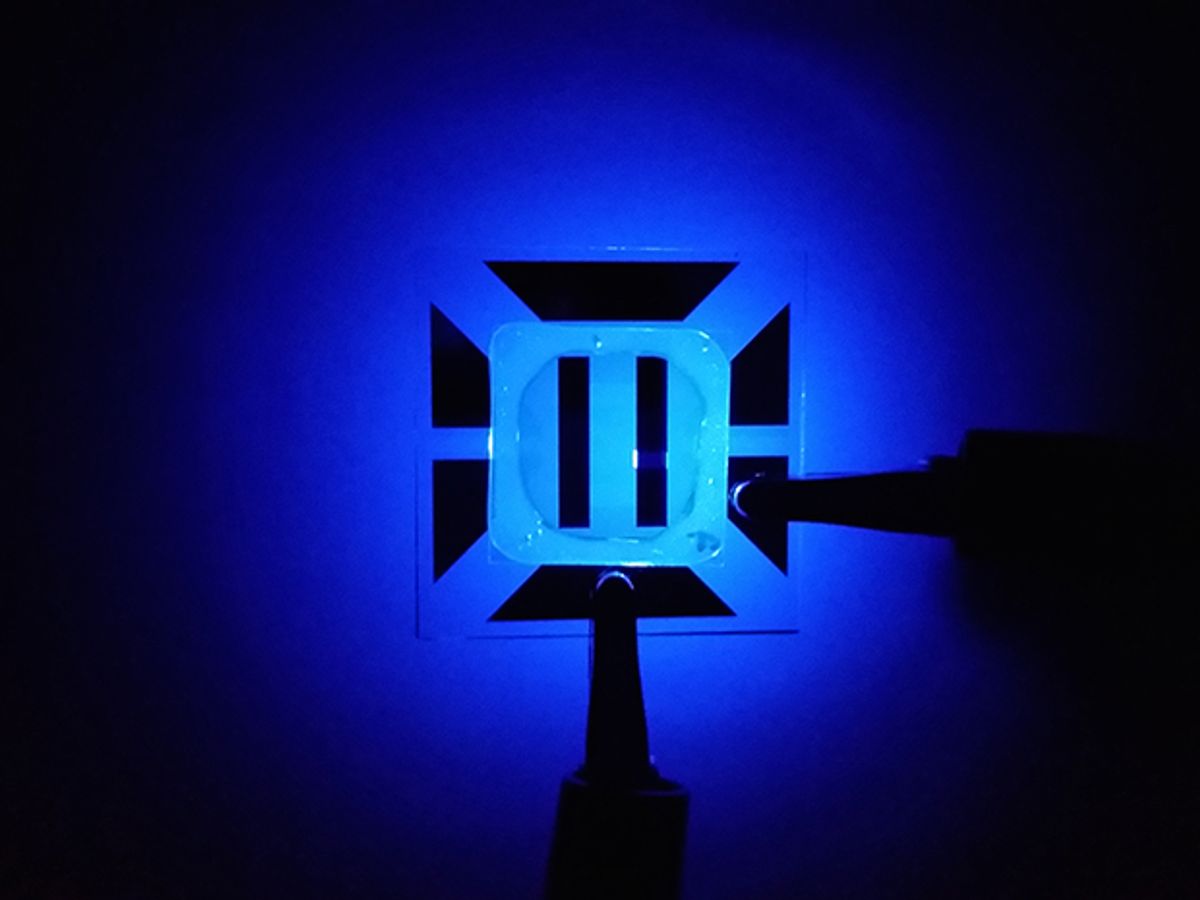A new energy-efficient organic LED (OLED) that glows a deep blue is finally close to meeting the most stringent U.S. video display brightness requirements, researchers say.
OLEDs have enabled a new generation of bright, high-quality, low-cost, power-efficient, flexible, lightweight flat panel displays. Each pixel in an OLED display typically consists of red, green, and blue OLEDs that shine with different brightnesses to produce any desired color.
Phosphorescent OLEDs (PHOLEDs) use only one quarter the energy of conventional OLEDs. Green and red PHOLEDs are already used in smartphones and TVs, leading to longer battery lives and lower electricity bills, but developing the kind of bright deep blue PHOLEDs needed for video displays has proven challenging.
Now scientists have developed what they say are the brightest deep blue PHOLEDs reported so far, work sponsored by Universal Display Corporation and the U.S. Air Force. The researchers added their new lights nearly meet the most stringent requirements of the National Television Systems Committee (NTSC), the video standards used across most of the Americas.
"There have been previous works that reported PHOLEDs having similar color as ours, but their brightnesses were very dim, about 10 times less," says study lead author Jaesang Lee, an electrical engineer at the University of Michigan, Ann Arbor. "A combination of high brightness and deep blue color is quite revolutionary."
The new PHOLEDs are based on a kind of molecule known as a N-heterocyclic carbene iridium-III complex, which emits deep blue light very brightly. This compound also emits light efficiently because its design reduces the chances that light-emitting excitons—electrons bound to their positively charged counterparts, holes—will either get lost as heat or destroy the compound itself, Lee says.
Unfortunately, this new PHOLED has a brief operational lifetime, just like many other blue PHOLEDs, Lee says. Future research will focus on stabilizing the molecule at the heart of this new PHOLED to create a longer-lasting version of the device.
Lee, along with IEEE Fellow Stephen Forrest and their colleagues, detailed the device in the journal Nature Materials.
Charles Q. Choi is a science reporter who contributes regularly to IEEE Spectrum. He has written for Scientific American, The New York Times, Wired, and Science, among others.



